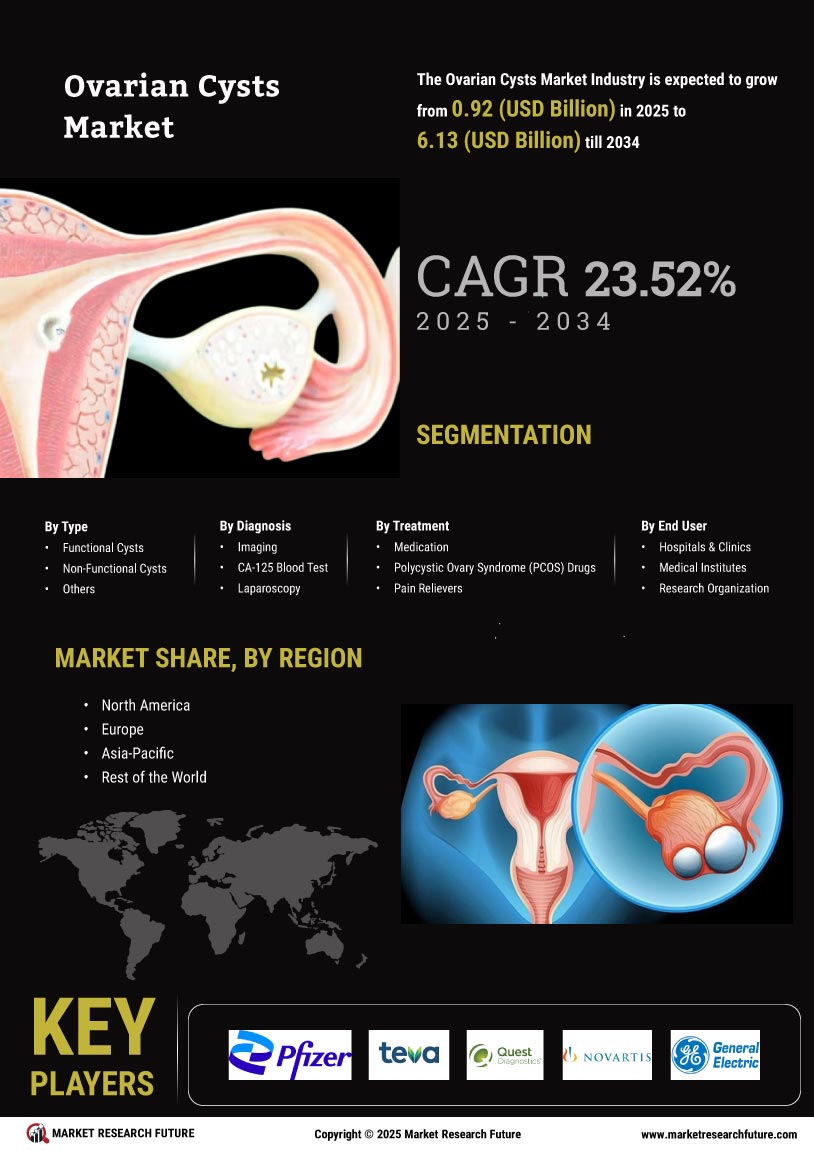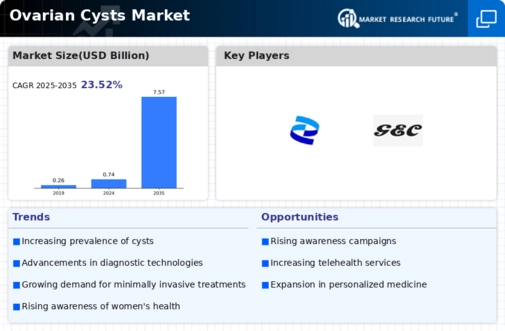Leading market players are expected to increase their footprint by investing heavily in manufacturing units during the forecast periods. Market participants are also undertaking various strategic activities to expand their footprint, with important market developments including new Type launches, contractual agreements, mergers and acquisitions, higher investments, and collaboration with other organizations. The market leaders for the Ovarian Cysts industry are expected to increase their revenue by increasing sales.
The prominent manufacturers of the Ovarian Cysts industry are increasing their footprint by investing heavily in increasing their volumetric capacities. During the forecast period, the Ovarian Cysts industry will make incredible changes in their outcomes. Major Ovarian Cysts market players include Pfizer Inc., Teva Pharmaceutical Industries Ltd, Quest Diagnostics Incorporated, and Novartis AG, which is attempting to increase market demand by investing in research and development operations.
Leading pharmaceutical corporation Pfizer Inc. has its headquarters in New York City, in the United States. Pfizer, founded in 1849, has grown to be one of the biggest and most reputable companies in the pharmaceutical sector. Pfizer develops, produces, and markets cutting-edge prescription medications, vaccines, and consumer healthcare products. Pfizer has a long history of almost 170 years and is dedicated to enhancing health outcomes. The organization works in various therapeutic fields, such as neuroscience, cardiology, oncology, immunology, rare disorders, and vaccines.
The varied portfolio of Pfizer includes patented and generic medicines, meeting the demands of a wide range of patients. Pfizer's accomplishments result from its commitment to research and development (R&D).
The business makes significant investments in scientific research. It has a wide range of investigational pharmaceuticals in various stages of development. Collaboration with academic institutions, governmental agencies, and other industry partners drives Pfizer's R&D initiatives, allowing the business to remain a leader in medical innovation. An international pharmaceutical corporation with its main office in Petah Tikva, Israel, is Teva Pharmaceutical Industries Ltd.
Teva was founded in 1901 and has grown to become one of the biggest generic pharmaceutical producers in the world as well as a significant force in specialty drugs and active pharmaceutical ingredients (APIs). The goal of Teva is to increase access to high-quality, affordable medicines and to improve health. The company's extensive product portfolio covers a wide range of therapeutic areas, such as diseases of the central nervous system, respiratory issues, oncology, pain management, and more.
The vast line of generic medications available from Teva provides patients, healthcare professionals, and healthcare systems worldwide with affordable alternatives to name-brand drugs. Teva is renowned for its dedication to innovation and makes considerable investments in R&D. The business runs several R&D facilities worldwide and employs a gifted group of scientists and researchers dedicated to developing new treatments and refining current drug formulations. In addition to creating generic drugs, Teva also creates specialty medications and biosimilars to meet unmet medical needs.













